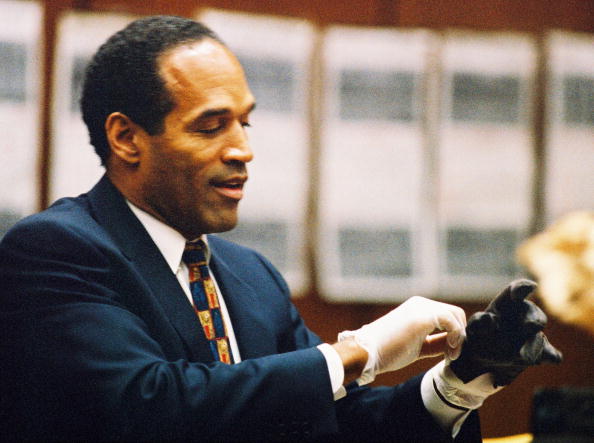WASHINGTON — For the first time, American women have passed men in gaining advanced college degrees as well as bachelor’s degrees, part of a trend that is helping redefine who goes off to work and who stays home with the kids.
Census figures released Tuesday highlight the latest education milestone for women, who began to exceed men in college enrollment in the early 1980s. The findings come amid record shares of women in the workplace and a steady decline in stay-at-home mothers.
The educational gains for women are giving them greater access to a wider range of jobs, contributing to a shift of traditional gender roles at home and work. Based on one demographer’s estimate, the number of stay-at-home dads who are the primary caregivers for their children reached nearly 2 million last year, or one in 15 fathers. The official census tally was 154,000, based on a narrower definition that excludes those working part-time or looking for jobs.
“The gaps we’re seeing in bachelor’s and advanced degrees mean that women will be better protected against the next recession,” said Mark Perry, an economics professor at the University of Michigan-Flint who is a visiting scholar at the American Enterprise Institute, a conservative think tank.
“Men now might be the ones more likely to be staying home, doing the more traditional child rearing,” he said.
Among adults 25 and older, 10.6 million U.S. women have master’s degrees or higher, compared to 10.5 million men. Measured by shares, about 10.2 percent of women have advanced degrees compared to 10.9 percent of men – a gap steadily narrowing in recent years. Women still trail men in professional subcategories such as business, science and engineering.
When it comes to finishing college, roughly 20.1 million women have bachelor’s degrees, compared to nearly 18.7 million men – a gap of more than 1.4 million that has remained steady in recent years. Women first passed men in bachelor’s degrees in 1996.
Some researchers including Perry have dubbed the current economic slump a “man-cession” because of the huge job losses in the male-dominated construction and manufacturing industries, which require less schooling. Measured by pay, women with full-time jobs now make 78.2 percent of what men earn, up from about 64 percent in 2000.
Unemployment for men currently stands at 9.3 percent compared to 8.3 percent for women, who now make up half of the U.S. work force. The number of stay-at-home moms, meanwhile, dropped last year for a fourth year in a row to 5 million, or roughly one in four married-couple households. That’s down from nearly half of such households in 1969.
By the census’ admittedly outmoded measure, the number of stay-at-home dads has remained largely flat in recent years, making up less than 1 percent of married-couple households.
Whatever the exact numbers, Census Bureau researchers have detailed a connection between women’s educational attainment and declines in traditional stay-at-home parenting. For instance, they found that stay-at-home mothers today are more likely to be young, foreign-born Hispanics who lack college degrees than professional women who set aside careers for fulltime family life after giving birth.
“We’re not saying the census definition of a `stay-at-home’ parent is what reflects families today. We’re simply tracking how many families fit that situation over time,” said Rose Kreider, a family demographer at the Census Bureau. She said in an interview that the bureau’s definition of a stay-at-home parent is based on a 1950s stereotype of a breadwinner-homemaker family that wasn’t necessarily predominant then and isn’t now.
Beth Latshaw, an assistant professor of sociology at Appalachian State University in Boone, N.C., notes the figures are based on a narrow definition in which the wife must be in the labor force for the entire year and the husband be outside the official labor force for the specifically cited reason of “taking care of home and family.”
Her own survey found that many fathers who had primary child-care responsibility at home while working part-time or pursuing a degree viewed themselves as stay-at-home fathers. When those factors are included as well as unmarried and single dads, the share of fathers who stay at home to raise children jumps from less than 1 percent to more than 6 percent.
Put another way, roughly one of every five stay-at-home parents is a father.
The remaining share of households without stay-at-home parents – the majority of U.S. families – are cases where both parents work full-time while their children attend school or day care or are watched by nannies or grandparents, or where fathers work full-time while the mothers work part-time and care for children part-time.
“There’s still a pervasive belief that men can’t care for children as well as women can, reinforcing the father-as-breadwinner ideology,” said Latshaw, whose research is being published next month in the peer-reviewed journal “Fathering.” She is urging census to expand its definition to highlight the growing numbers, which she believes will encourage wider use of paternity leave and other family-friendly policies.
The new “Mr. Moms” include Todd Krater, 38, of Lakemoor, Ill., a Chicago suburb. Krater has been a self-described stay-at-home dad for the past seven years to his three sons after his wife, who earned a master’s business degree, began to flourish in her career as a software specialist.
Krater said he found it difficult adjusting at first and got little support from other mothers who treated him as an outcast at school functions. He eventually started writing a blog, “A Man Among Mommies,” to encourage other fathers to take a larger role in child care and says he now revels in seeing more dads at the park, library and school events.
“What was once an uncommon sight of a dad with the kids during the day is becoming more and more prevalent,” said Krater, who is now studying part-time to become a registered nurse. “But many still feel the pressure of gender roles and feel if they don’t make money they are somehow less of a man.”
The census numbers come from the government’s Current Population Survey as of March 2010. Among other findings:
-Among adults 25 and older, women are more likely than men to have finished high school, 87.6 percent to 86.6 percent.
-Broken down by race and ethnicity, 52 percent of Asian-Americans had at least a bachelor’s degree. That’s compared to 33 percent for non-Hispanic whites, 20 percent for blacks and 14 percent for Hispanics.
-Thirty percent of foreign-born residents in the U.S. had less than a high school diploma, compared to 10 percent of U.S.-born residents and 19 percent of naturalized citizens. At the same time, the foreign-born population was just as likely as U.S.-born residents to have at least a bachelor’s degree, at roughly 30 percent.
Jeremy Adam Smith, author of the 2009 book “The Daddy Shift: How Stay-at-Home Dads, Breadwinning Moms and Shared Parenting are Transforming the American Family,” described a cultural shift as women began to surpass men in college enrollment in the 1980s. The 1983 movie, “Mr. Mom,” openly broached the idea that out-of-work fathers can contribute to families as stay-at-home dads, allowing more men to be accepting of the role in subsequent recessions, he said.
“Over the long term, the numbers are just going to keep going up,” Smith said.
RELATED:
















